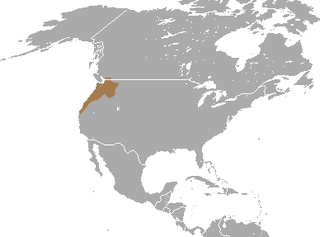
Original source: Base map derived from File:BlankMap-World.png. Distribution data from IUCN Red List
Author: Chermundy
Coast mole
Order : Insectivora
Family : Talpidae
Subfamily : Talpinae
Species : Scapanus orarius
The Coast mole is listed as Least Concern (LR/lc), lowest risk. Does not qualify for a more at risk category. Widespread and abundant taxa are included in this category, on the IUCN Red List of Threatened Species
Namings for the coast mole
A young / baby of a coast mole is called a 'pup'. A coast mole group is called a 'labour,company or movement'.
Facts about the coast mole
Occasionally referred to as the "pacific" mole, coast moles are highly fossorial in habit.
The Coast mole, Scapanus orarius, is about half as large as Townsend's mole and occupies much of the same area.
The Pacific mole (Scapanus orarius) is generally distributed in the coastal fog belt and in sections of southeastern Washington and northeastern Oregon.
The Pacific mole (Scapanus orarius) is native in the California fog belt and sections of Oregon and southeastern Washington. (Full text)
Not surprisingly, the tendency for forelimb Mb levels to greatly exceed hindlimb values in Condylura cristata and Scapanus orarius is reversed from the trend generally observed in muskrats (MacArthur, 1990; MacArthur et al. (Full text)
Occasionally referred to as the "pacific" mole, coast moles are highly fossorial in habit. (Full text)
Coast moles are primarily known for the numerous molehills that outline their home ranges. (Full text)
Occasionally referred to as the "pacific" mole, coast moles are highly fossorial in habit. (Full text)
More animals beginning with C
